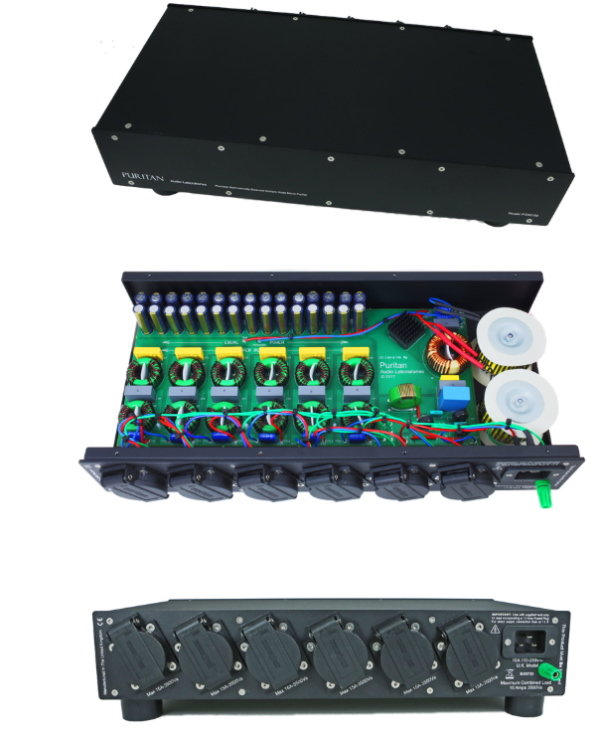selecting which epistemological school
Which was?
Yes, at a minimum, compliance is what we want. But then here is what you also said: "Would I use this in the garden shed? Absolutely. Would I use this for audio? No". These kinds of comments do not inspire us to want to treat devices like this.
…
The design of a $40 block is bad, a $10 block worse. Neither offer anything of value that is curable by any magic potion. $10 just gives us a safe 13A. Not having surge protection is a really bad idea, especially with servers and streamers, because a standard slow blow fuse and the circuit breaker (with compliant earth loop impedance) is no guarantee that your hifi may not get fried. I’ve experienced a hard drive get fried by a surge, since when I use UPS blocks on all my computers and servers.
Just for reference, this is what has been on the founder of QSA’s LinkedIn page for the last 8 years:
mat technology is to bring audio and video products quality to top level in short time.
The world 's first metal molecular activation technology
So that metal molecules into the "smooth state"
Reduce the resistance, enhance the electronic flow in the conductor speed,
@speed up electron running speed per second@.
So as to enhance the performance of any audio products
any audio products remain 70% potential come out ,even you are daily use of cable cooker.
our procession in.short time
just need a few second procession time.
He then lists a myriad of devices it can be applied to, from fuses, many types of wire, audio components and the shell of your car.
Just sticking to the one line I’ve highlighted, this goes to your comments about a preference for thick gauge wire. If you increase the gauge you increase the capacity to carry current. Current, measured as Amperes, is by definition the amount of electrical charge that can be transmitted through a conductor in a period of time. Even I know that, and I’m an economist.
This is the cable I purchased to run between the consumer unit and hi-fi socket.
16 x Neotech NEP-4003 UP-OFC Copper Silver plated Mains Cable (0.5m) - £242.88 (£15.18 each)
The choice was determined by it being very flexible, which was important, it has a drain wire and is rated at 27A. According to the spec sheet it is equivalent to 13 AWG.
Sticking to rationalism (now that this discussion has turned philosophical), this cable will always be capable of carrying 27A of charge. There’s nothing mystical, philosophical or magical about that. The cable complies with the electrical code. My hi-fi system at peak output would only draw about 9A, so I can plug it all into one socket and in that regard this cable is more than sufficient. In my rational world, there are no circumstances under which this cable will ever be current limiting. It will always be able to transfer sufficient electrical charge at the required rate for my audio system, and the cable wouldn’t even reach half of its capacity.
Reverting to the voltage, current, resistance analogy of the water pipe, a water pipe capable of delivering 200 L/m under constant pressure will never limit you to anything under 200 L/m. There is no need to have a bigger pipe capable of 400 L/m to ensure 200 L/m. It may give you peace of mind. It would give you protection in the event of a reduction in water pressure, but thankfully we have legal limits within which the voltage of an electrical supply can change.
Even if the QSA process, whatever it is, does exactly what is described in the highlighted sentence above, it would result in an easily measurable change in the current carrying capacity of the conductor. so why rely on subjective empiricism when the process is being described as something that can very easily be objectively measured? There is of course the question why you would want to increase the current capacity of an adequately specified cable in the first place (reference the pipe analogy).
Call me a troll, ban me from this forum for life, I don’t really care, but this whole idea that a cable or fuse for that matter is “current limiting“ when its technical specification clearly shows that it is not, is to me just nonsense. Remember I live in a country where all electrical cabling by law is rated by its capacity to carry current, not by its physical characteristics (i.e. AWG).
AWG doesn’t seem very sensible or useful to me anyway. It just tells you how thick the cable is. That’s useful if you want to stick it through a hole, it tells you nothing about its electrical properties. I’ve seen 13 AWG cable rated anything between 16A and 27A.
Concluding philosophically, empiricism (cable A sounds better than capable B) is not knowledge without a rational theory to explain it. With respect, QSA has never provided a rational theory (which would be based on the laws of physics) about anything.





